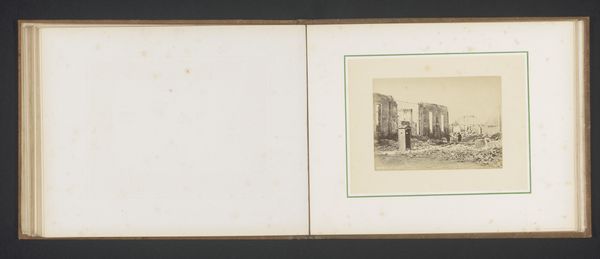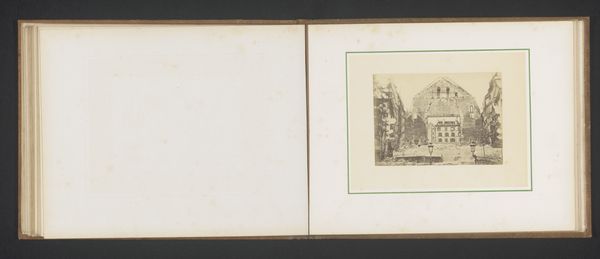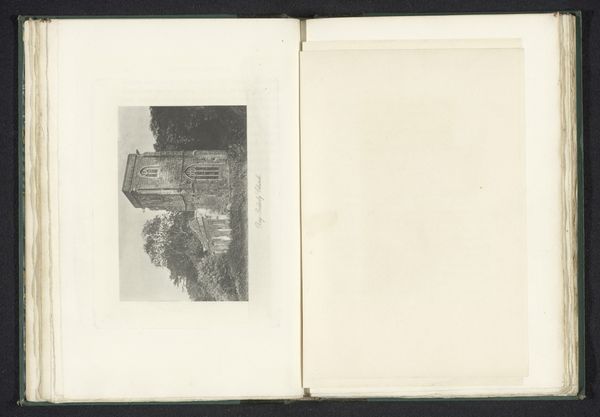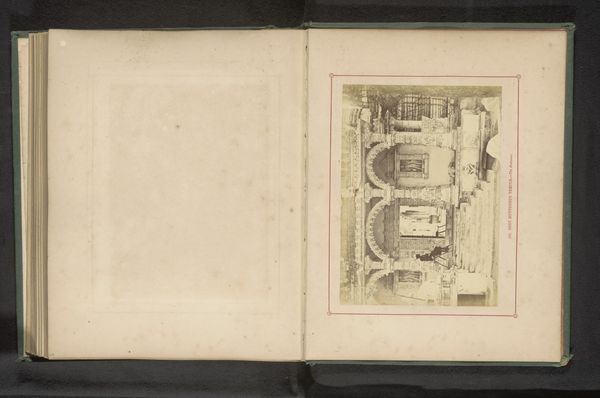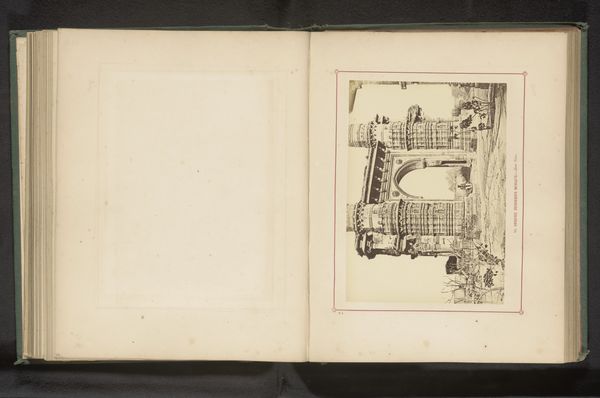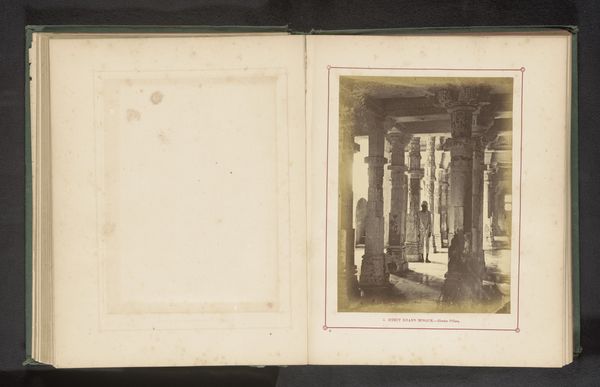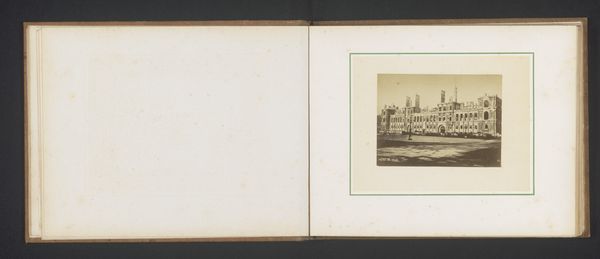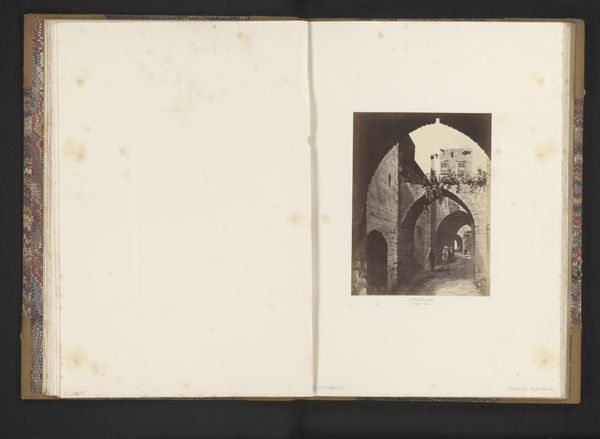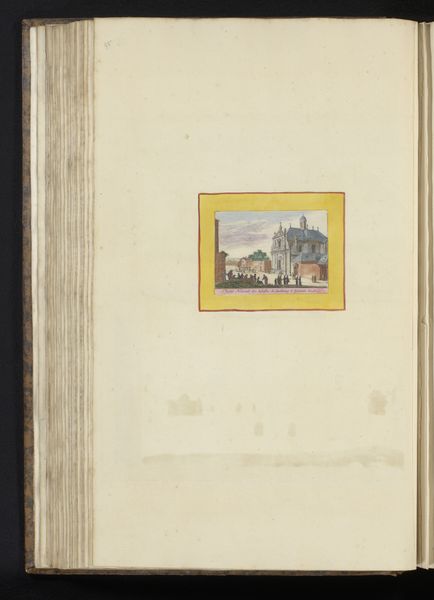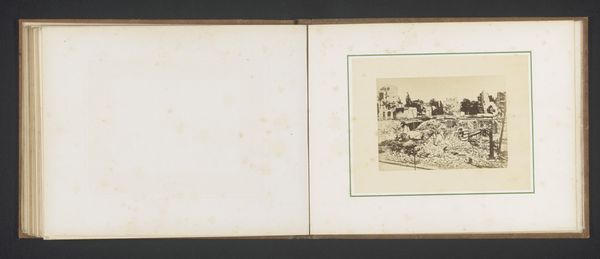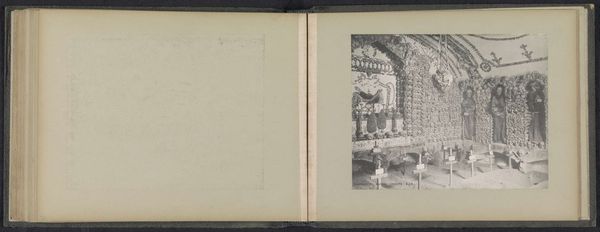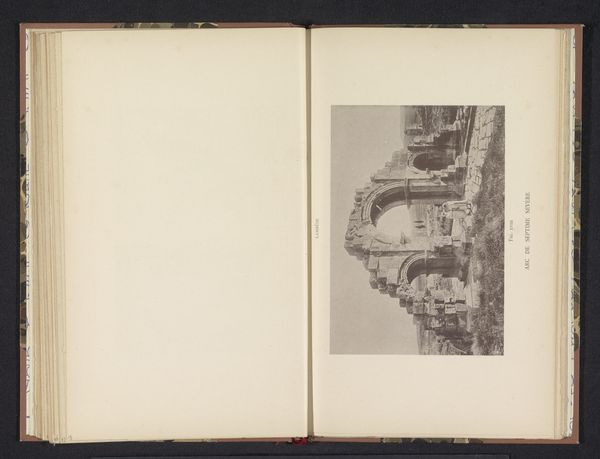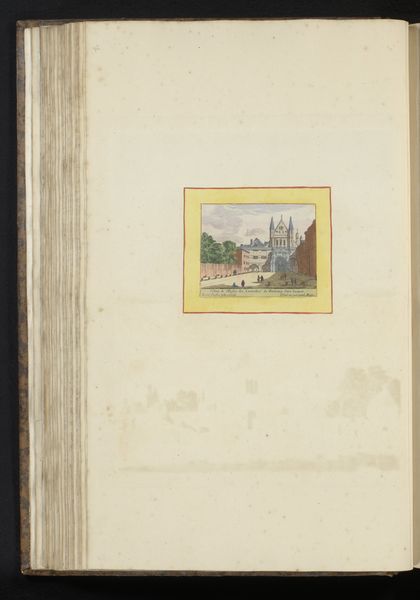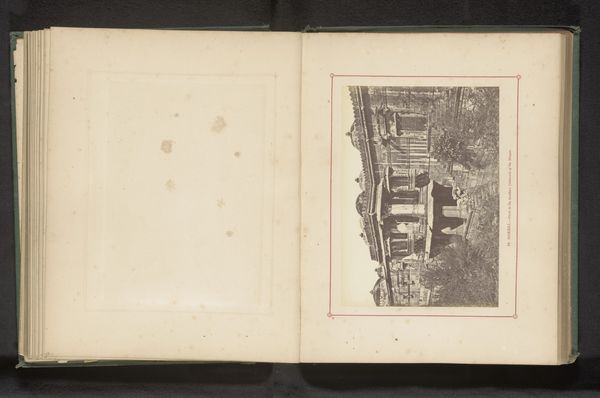
Gezicht op Fort d'Issy in Issy-les-Moulineaux na de brand door de Commune van Parijs 1871
0:00
0:00
Dimensions: height 93 mm, width 129 mm
Copyright: Rijks Museum: Open Domain
Curator: Well, that’s bleak. It's quite unsettling, all that devastation captured in monochrome. Editor: It is striking, isn’t it? This etching is entitled “Gezicht op Fort d'Issy in Issy-les-Moulineaux na de brand door de Commune van Parijs” - “View of Fort d'Issy in Issy-les-Moulineaux after the fire by the Paris Commune." It’s attributed to P. Loubère and dates from 1871. Curator: Ah, 1871. The immediate aftermath. You can almost smell the smoke. What intrigues me is the method Loubère chose: an etching. There's something about the precise, almost industrial nature of printmaking that underscores the cold, hard reality of destruction. It is as if the technique becomes a testament itself. What material realities went into producing this, making it reproducible, viewable, digestible by a wider audience? Editor: Indeed. The choice of printmaking allowed for the mass dissemination of this image. It transformed the ruins into a public spectacle and fueled political sentiments. The Commune was a bloody, transformative event, and how it was portrayed, how its remnants were seen, held significant power. What are the stories that were circulated at that time about this very fort? Curator: Absolutely, it's crucial to consider the context: who was this work intended for, and what were they meant to *do* with this image? The crisp lines, the stark contrasts, speak to the material and the means by which the information—and arguably, the ideology—were spread. We could delve deeper into paper, inks, the economy that supported their production. This isn't just art; it’s documentation shaped by, and shaping, social narratives. Editor: A form of visual propaganda perhaps? These weren’t neutral renderings. They became enmeshed in a battle for the public's perception of the Commune, contributing to its historical legacy and influencing public opinion on social upheaval and revolutionary actions. We see that, perhaps, even today. Curator: Exactly. That convergence of material reality, of etching plates and printing presses, with the making of memory—it’s that intersection I find so powerful. Editor: It is a potent reminder of art’s function in bearing witness. Curator: Well said. Editor: I’ll remember it. Thank you.
Comments
No comments
Be the first to comment and join the conversation on the ultimate creative platform.
